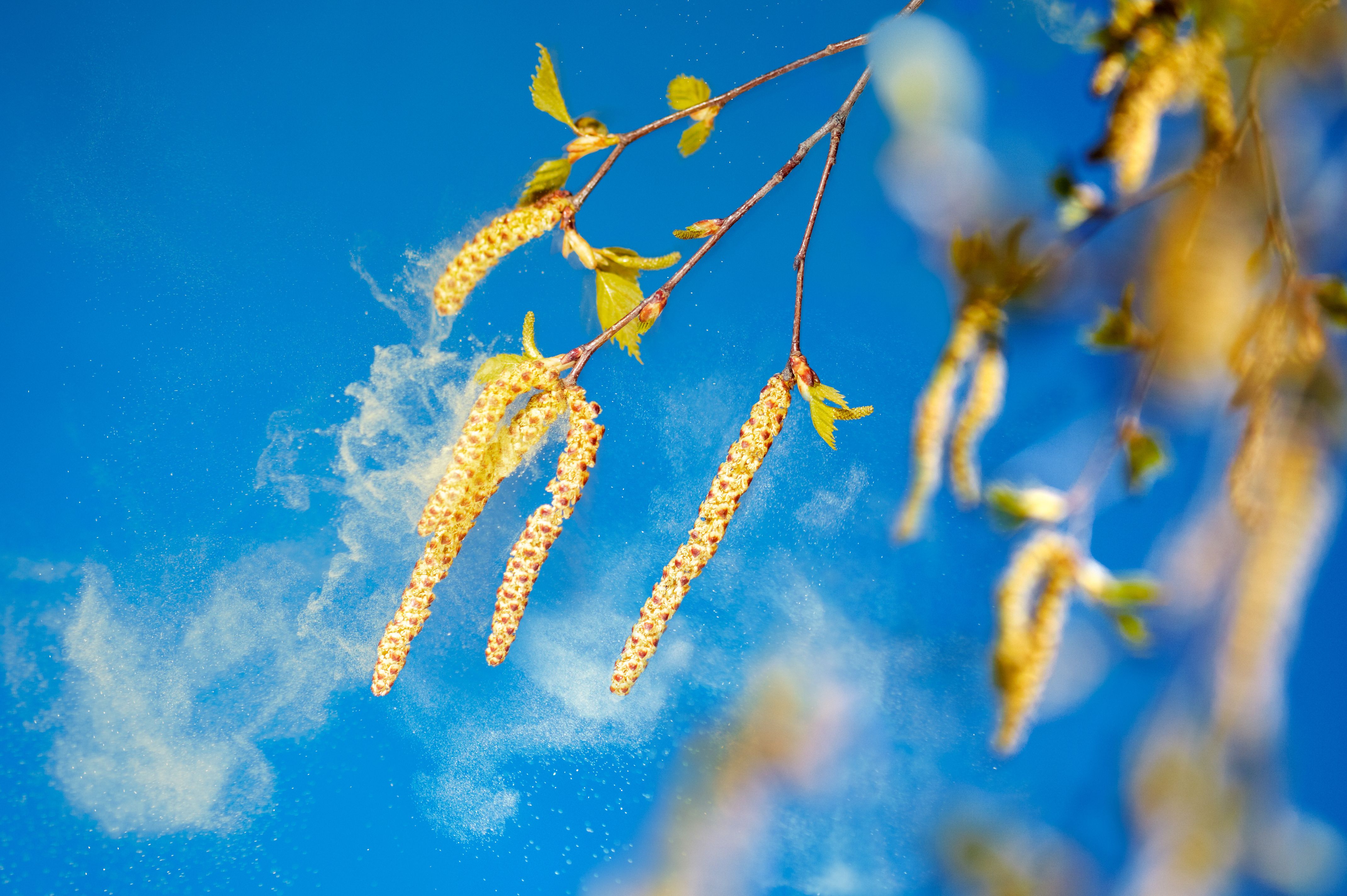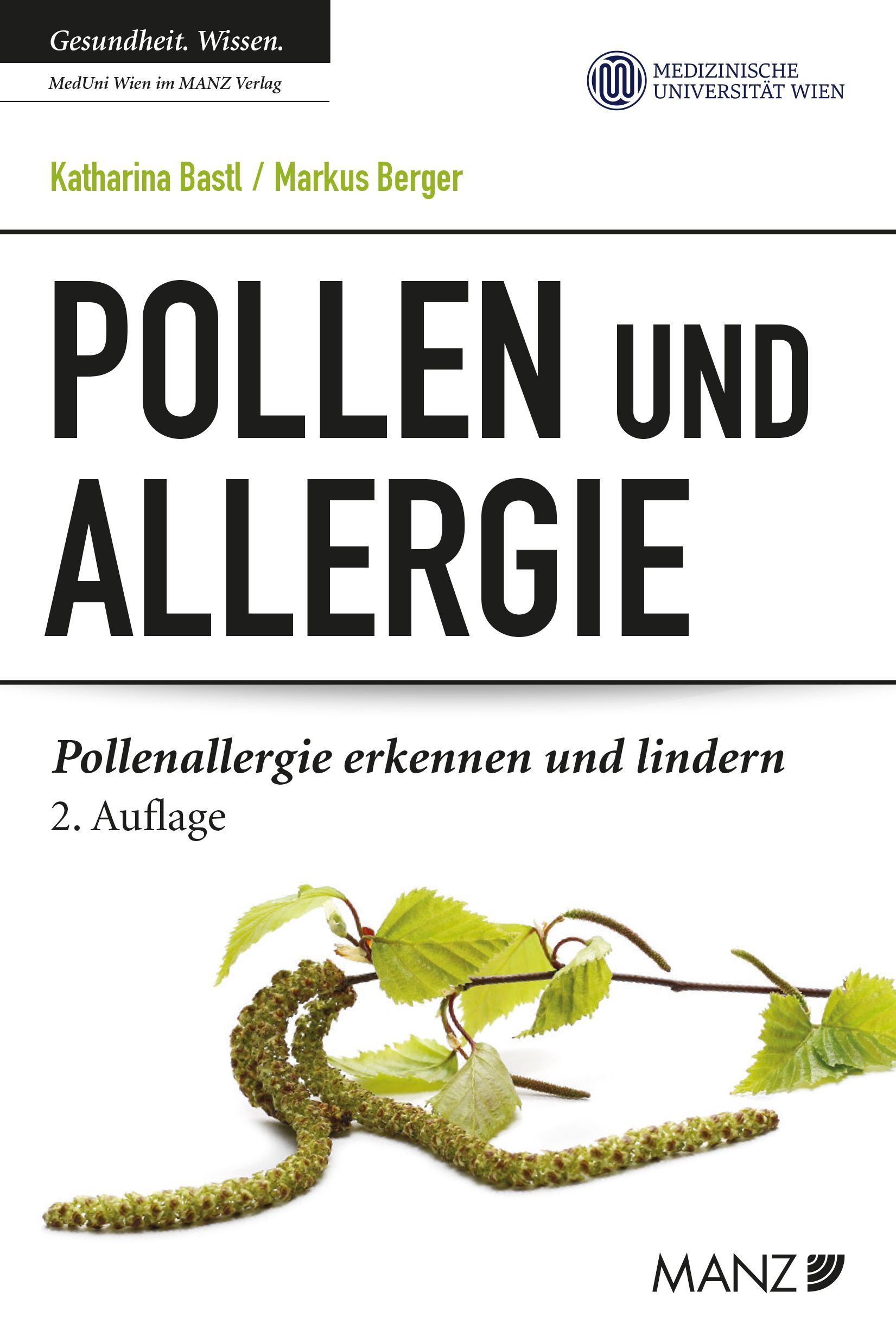
(Vienna, 18 March 2021) The questions surrounding pollen allergies are becoming increasingly complex. The variety of pollen allergies is increasing, while climate change and environmental factors do the rest. Research work conducted at the Medical University of Vienna is providing answers to many of these questions. It also forms the basis for MedUni Vienna's free Austrian Pollen Monitoring Service. At today's joint press conference held by MedUni Vienna's Austrian Pollen Monitoring Service together with the IGAV (Allergen Avoidance Interest Group) information platform, MedUni Vienna experts presented new scientific results and new services. They were able to give the all-clear for this year's pollen season: the pollen count will probably be below average.
For people who are allergic to pollen from hazel, alder, birch etc, Springtime is both friend and foe. Due to the cold snap in January, the flowering of hazel and alder was delayed by two weeks. These early blossoming trees have now passed their peak, ensuring an average season. The next wave will come from ash trees, the allergenic potential of which is often underestimated. "They have already started to flower, and this is expected to be less vigorous than the long-term average," says Uwe E. Berger, Head of MedUni Vienna's Austrian Pollen Monitoring Service. The picture is equally favourable for birch pollen: "The birch follows a biological pattern: a strong season is followed by a weaker one. For the first time in a long time, this popular avenue-lining tree broke this pattern with two consecutive stronger seasons in 2019 and 2020. We can therefore expect a below-average season this year throughout Austria."
Increasing variety
Pollen allergies are on the rise and are becoming increasingly varied. "Nowadays, we are confronted with allergens practically all year round and some of these were not even recognised as allergy triggers a few years ago," explains Erika Jensen-Jarolim from the Institute for Pathophysiology and Allergy Research at MedUni Vienna and President of the Austrian Society for Allergology and Immunology (ÖGAI), which is celebrating its 50th anniversary this year. Incidentally, most of the IGAV experts are also members of the ÖGAI. For example, more and more exotic plants such as olive trees and fig trees or Japanese cedars are to be found Austrian gardens. Such species have high allergenic potential and, as a result of global warming, are now starting to thrive even in our latitudes.
Apropos global warming: we know that the atmospheric pollutant ozone makes a significant contribution towards climate change, but it also has a direct influence upon allergic events. "The results of recent studies show that the irritant gas exacerbates the symptoms of grass and birch pollen allergy sufferers in particular, irrespective of the amount of pollen grains in the air (1)," explains Markus Berger of the Austrian Pollen Monitoring Service and warns: "Despite the below-average pollen count, the impact will not necessarily be perceived as minimal. Even though pollen release starts very suddenly, the impact can be severe."
On top of horticultural diversity paired with climate change and air pollution, there is the phenomenon of cross-reactions. Jensen-Jarolim explains: "This means that an allergy sufferer does not only react to one allergen from a single allergen source but can also become sensitised to structurally similar allergens in other plants or foodstuffs." We have to be able to test this new variety. "Today, modern tests with many different allergens enable us to make an accurate diagnosis. These so-called molecular allergy diagnostics can also identify sensitisations to rare pollens and determine potential complex cross-reactions," says the allergy expert. Matched to the reported symptoms and the results of a skin test, it is possible to give specific personalised recommendations for allergen avoidance and implement symptomatic treatment and, most notably, allergy-specific immunotherapy.
Research is the basis for pollen services
The results of aerobiological and medical research work formed the basis for the free services offered by MedUni Vienna's Austrian Pollen Monitoring Service, which is an essential companion for many allergy sufferers during the pollen season. A new research project now aims to compare the symptom data from the last few years with those from the coronavirus year 2020 to see whether wearing a face mask has any impact on allergy symptoms. "The initial data show that a mask, whether that be a surgical mask or an FFP mask, might reduce nasal symptoms in particular. However, more severe symptoms were observed in the – unprotected – eyes," says Markus Berger.
New platform facilitates doctor/patient exchanges
Valuable support has also been available for doctors for many years. This service is now being expanded even further. Via the new platform "Ärzteservice" [Doctors' Service] (www.pollenwarndienst.at/aerzteservice), doctors can now use a secure link to access concisely presented information about their patients' symptoms and link them to the regional pollen count. There is also a graphic clearly showing measured pollen data, forecast data and symptom data for a given postcode, thereby offering a sound decision-making aid for diagnosis and treatment.
There is also a new heading for "FAQs", which is being offered due to the plethora of questions constantly being put to employees of the Austrian Pollen Monitoring Service. It is now possible to call up the main questions that exercise pollen allergy sufferers. This section is being continuously expanded.

New edition of "Pollen and Allergy"
With its book "Pollen and Allergy" published in 2015, the Austrian Pollen Monitoring Service provided a self-help book giving pollen allergy sufferers background knowledge and practical advice to help them through the pollen season. The content has now been supplemented to include the hot topic of COVID 19 & allergies and a chapter has also been dedicated to the impact of air pollutants. The new edition from MedUni Vienna in collaboration with MANZ Verlag will come out in April.
Pollen app: even more user-friendly and with new feature
A few years ago, pollen monitoring went mobile with the development of the pollen app. "This means that users always have access to an instant overview of where the twelve main allergy triggers are present in the air and in what quantities," explains Uwe E. Berger. As well as that: "The pollen information can be individually tailored to the user, thus offering fully personalised pollen monitoring." This free service is being developed and refined year on year, with new features being added and usability improved. The Doctors' Service has now been incorporated into the app. The Pollen App is available as a free download for smartphones and tablets with iOS and Android operating systems:
www.pollenwarndienst.at as well as in app stores.
(1) Berger M, Bastl K, Bastl M, et al. Environ Pollut. 2020;263. doi:10.1016/j.envpol.2020.114526